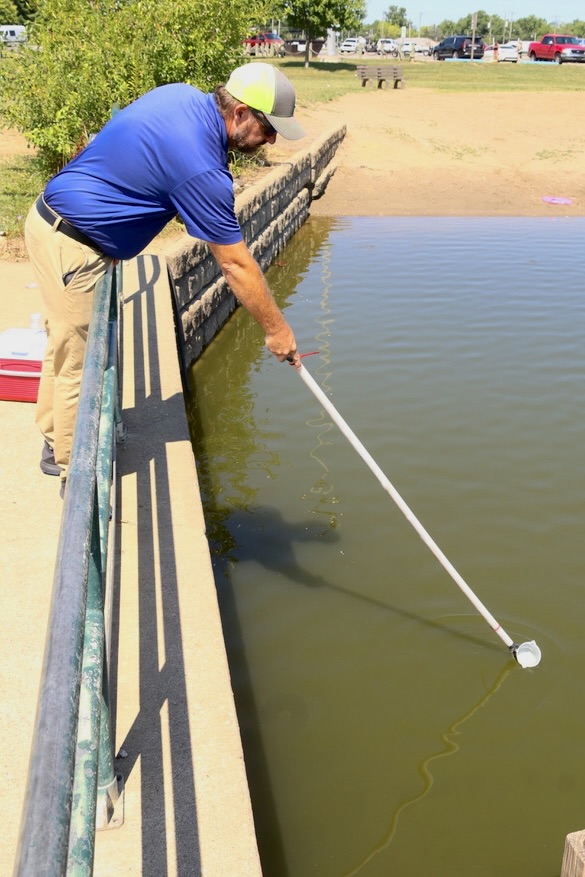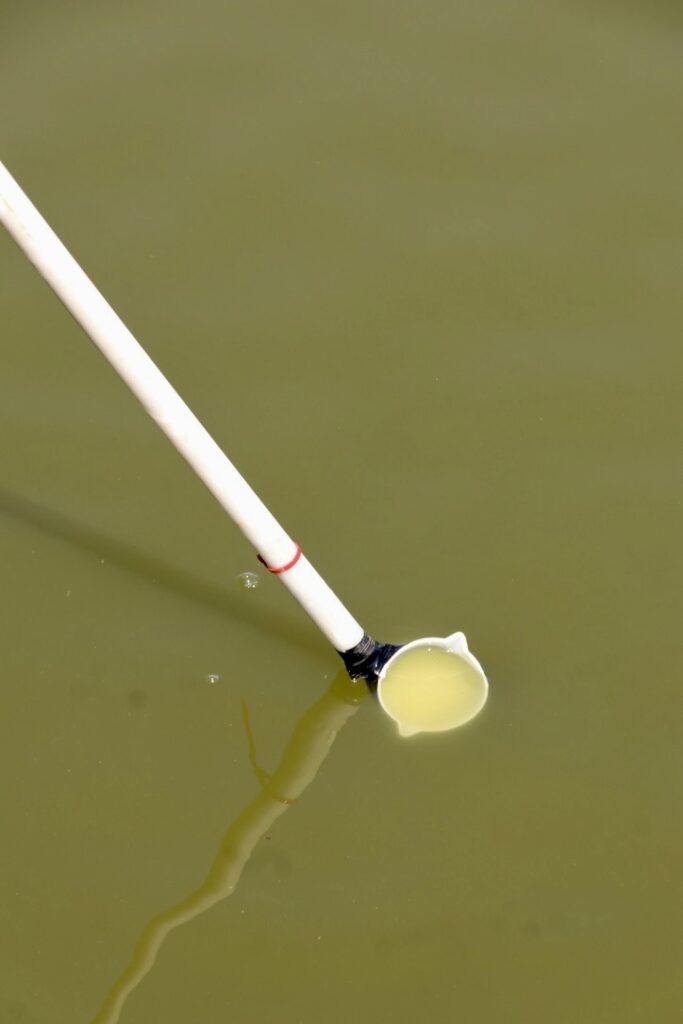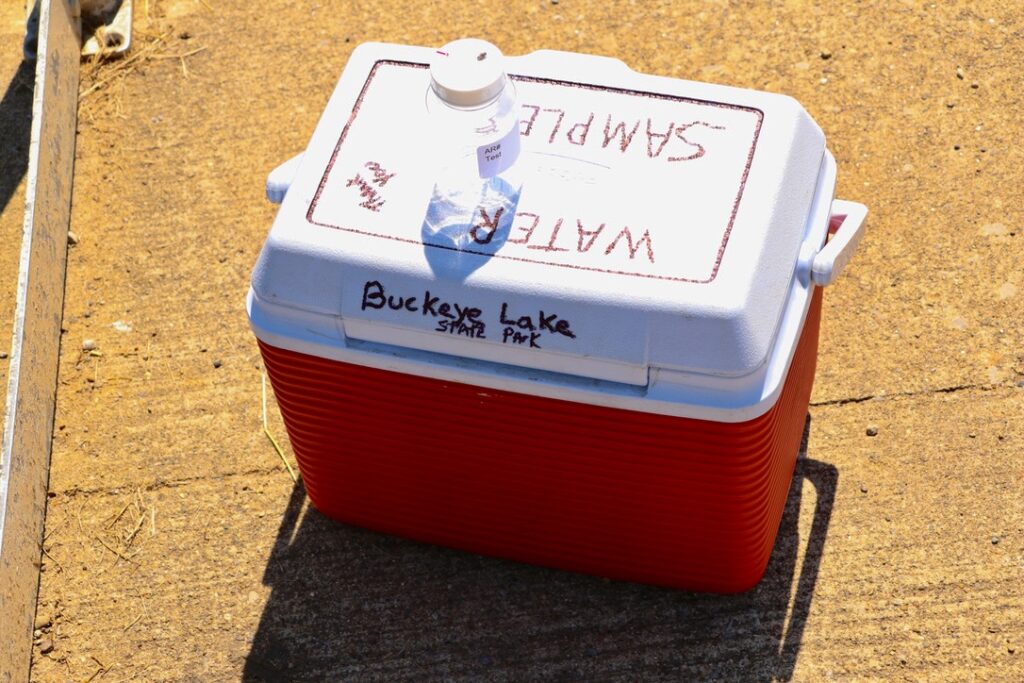Mark Hoffhines surveyed the water of Crystal Beach at Buckeye Lake as he explained his biweekly routine. He paused for a moment, his finger pointed toward the water as he eagerly announced the presence of a school of minnows.
Hoffhines has been the park manager at the Buckeye Lake State Park for the Ohio Department of Natural Resources (ODNR) for the past five years. Care of the 3,100-acre lake and miles of trails falls to him and his team, so every two weeks, Hoffhines ventures out to one of the beaches to sample the water for E. coli, a bacteria that can cause painful infections, severe illness and death in extreme cases.
His work demeanor returned as he moved his finger toward the small patch of sand in front of him.
“We definitely don’t want to get something right up against the sand. Just because it’s not a really good, clean sample,” Hoffhines said on July 19. “Something right up against the beach in the sand where the water is typically a lot warmer just gives us a little bit better idea of what’s in the water itself.”
Hoffhines demonstrated how to use his various tools from the small dock on Crystal Beach.
“This is called a grab sample,” he stated while lifting a cup of Buckeye Lake water up from the surface.
After he collects the sample, it is placed in a sealed container and sent to the lab to be tested for bacteria. There, it takes a few days to process before the results are sent back.



The presence of E. coli within their water sample is measured by “CFU/mL,” which stands for Colony Forming Units per milliliter. If there are more than 235 CFU per milliliter in a sample, then ODNR posts an advisory cautioning about the high concentrations of E. coli bacteria in the area. If the concentration of CFUs is below 235, no advisory is issued and people may proceed with their recreation on the lake.
When the water is deemed worthy of an advisory, Hoffhines returns every week to test until he pulls an acceptable sample.
“You can still swim,” Hoffhines said. “The beaches are never closed. We could put up 40 signs during an advisory and people would still be down here with their kids.”
Hoffhines said he had never heard of anyone getting sick from the water at Buckeye Lake.
A fast-food sandwich “probably has more bacteria from the guy that didn’t wash his hair, the girl that didn’t wash her hands,” Hoffhines said.
All of the information on tests for E. coli can be found on the Ohio Beach Guard website. Data used to be reported on Data.Ohio.gov, but the state recently switched to the Beach Guard site. There, they post advisories and the test results for bodies of water within Ohio.
On July 24, for example, there were 18 advisories across the state warning swimmers and boaters of high levels of bacteria. None of the warnings were in central or southeastern Ohio, and most were along Lake Erie. There were several in northeastern Ohio, and a few in western Ohio.
While the levels of E. coli in Buckeye lake are deemed safe, there are those who are trying to ensure the highest water quality within the area.
A group called Buckeye Lake for Tomorrow has taken the initiative of installing “bubblers” within the lake that circulate oxygen through the water to improve its quality. In addition to Buckeye Lake for Tomorrow’s efforts, H2Ohio – launched by Gov. Mike DeWine in 2019 – has also been working to improve water quality.
Through the use of human-built wetlands, H2Ohio has been filtering water that enters Buckeye Lake. Since much of that water is agricultural runoff, it often contains pollutants such fertilizers, pesticides, soil particles and phosphorus, which could affect the water quality of Buckeye Lake. Through these wetlands, much of the nitrogen, phosphorus, E. coli bacteria and other substances are filtered out before they can make it to the lake.
“Just making sure that people have a safe place to swim is part of that customer-service thing. You don’t want somebody to come and bring their grandparents that are in their 80s and they get sick because they consumed some water while swimming,” Hoffhines said.
Hoffhines’ biweekly tests ensure that such things don’t happen. By keeping his cup in the water, he ensures that people are safe to swim, fish, kayak and enjoy the best of Licking County without worry.
Andrew Theophilus writes for TheReportingProject.org, the nonprofit news organization of Denison University’s Journalism program, which is supported by generous donations from readers. Sign up for The Reporting Project newsletter here.

